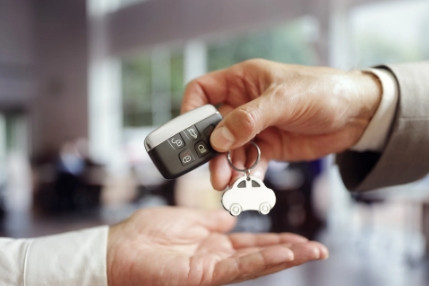The Ultimate Guide to Vehicle Licensing: Navigating the Process with Ease

Image Source: Google
Whether you're purchasing a new car, moving to a different state, or simply need to renew your vehicle registration, understanding the process of vehicle licensing can save you time and effort. Navigating the world of vehicle licensing can be overwhelming with its myriad of rules and regulations. If you are looking for vehicle licensing, you should check the Vehicle Sales Authority of BC.
Types of Vehicle Licenses
1. Personal Vehicle License
- Most common type of vehicle license
- Covers private passenger vehicles
- Renewable annually
2. Commercial Vehicle License
- Required for vehicles used for business purposes
- May involve additional permits or certifications
- Renewal frequency varies based on the type of commercial vehicle
Vehicle Licensing Process
1. Gather Required Documents
Before starting the vehicle licensing process, make sure you have the following documents handy:
- Vehicle title
- Proof of insurance
- Driver's license or ID
- Proof of residency
- Social security number
2. Complete Application Form
Fill out the vehicle licensing application form provided by your state's Department of Motor Vehicles (DMV). Make sure to provide accurate and up-to-date information to avoid any delays in the process.
3. Pay Fees
Vehicle licensing typically involves certain fees that need to be paid. These fees vary depending on the type of vehicle and your location. Make sure to have the necessary funds ready to complete the licensing process.
Renewing Vehicle License
1. Check Renewal Date
Make sure to check the expiration date of your vehicle license to avoid driving with an expired license. Renewal notices are usually sent out by the DMV, but it's always a good idea to proactively check your renewal date.
2. Renew Online or In-Person
Depending on your state, you may have the option to renew your vehicle license online or in-person at a DMV office. Online renewal is typically faster and more convenient, but in-person renewal allows you to ask any questions you may have about the process.
3. Update Information if Necessary
If any of your personal information has changed since your last vehicle license issuance, make sure to update it during the renewal process. This includes changes in address, name, or insurance provider.
Transferring Vehicle License
1. Prepare Required Documents
When transferring your vehicle license to a new state or owner, you will need to gather the following documents:
- Vehicle title
- Bill of sale (if transferring ownership)
- Proof of insurance
- Driver's license or ID
2. Submit Transfer Request
Submit a transfer request to the relevant DMV office. Be prepared to pay any necessary transfer fees and provide all required documentation to complete the transfer process smoothly.
3. Obtain New License Plates
After transferring your vehicle license, you may be issued new license plates. Make sure to install them on your vehicle according to your state's regulations to avoid any penalties.
Conclusion
Understanding the vehicle licensing process is essential for every vehicle owner to stay compliant with state regulations. By following the steps outlined in this ultimate guide, you can navigate the process with ease and ensure that your vehicle remains properly licensed at all times.